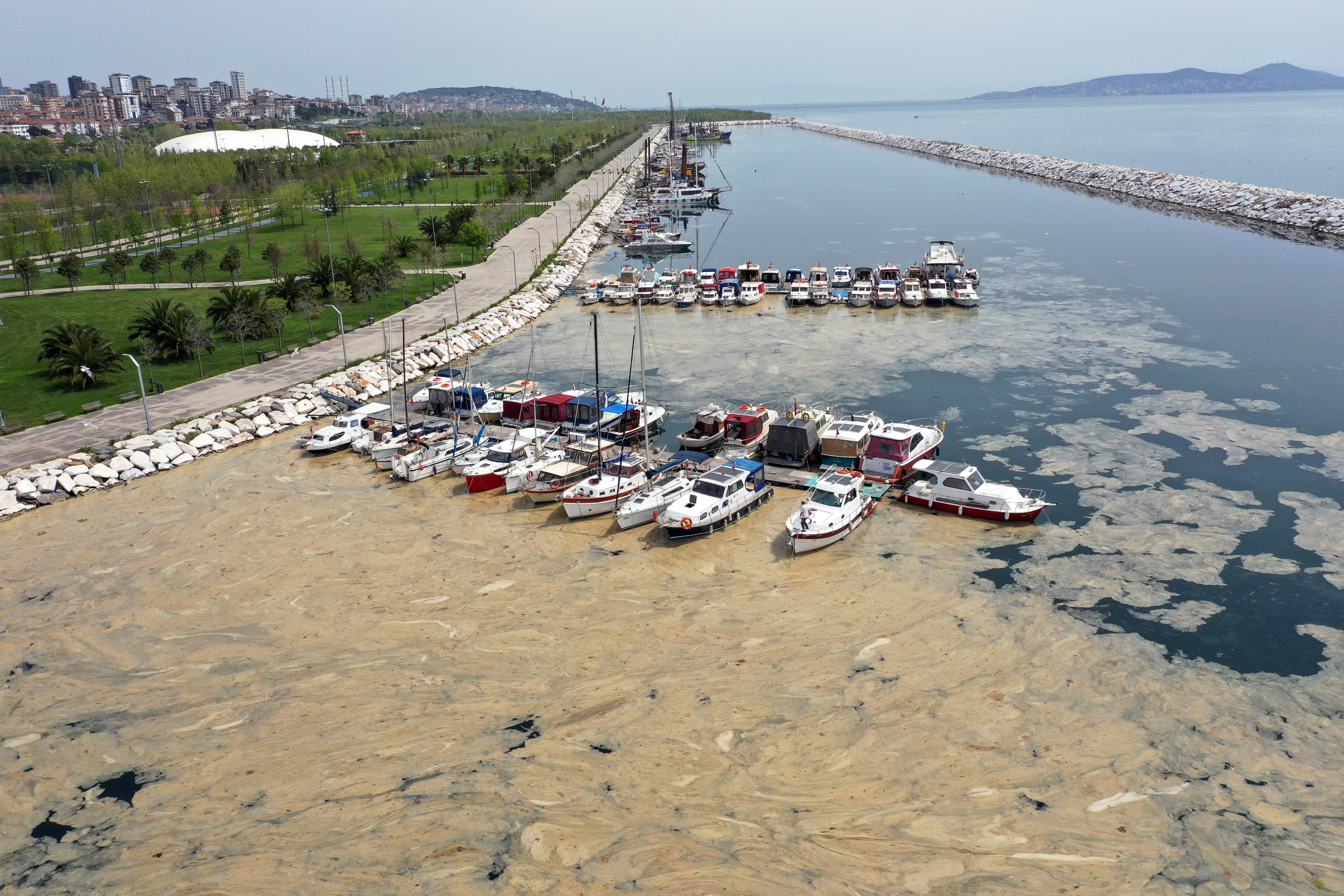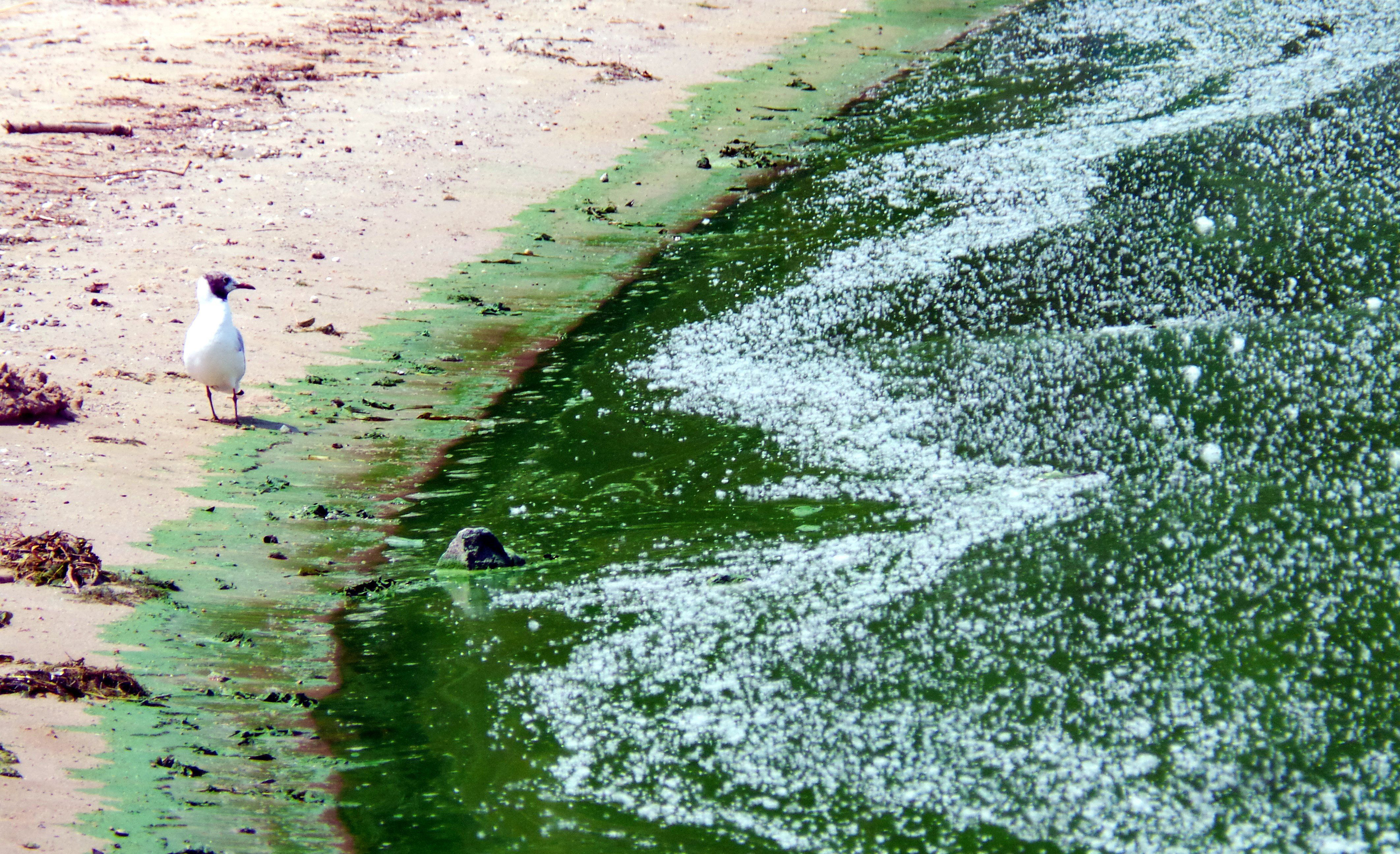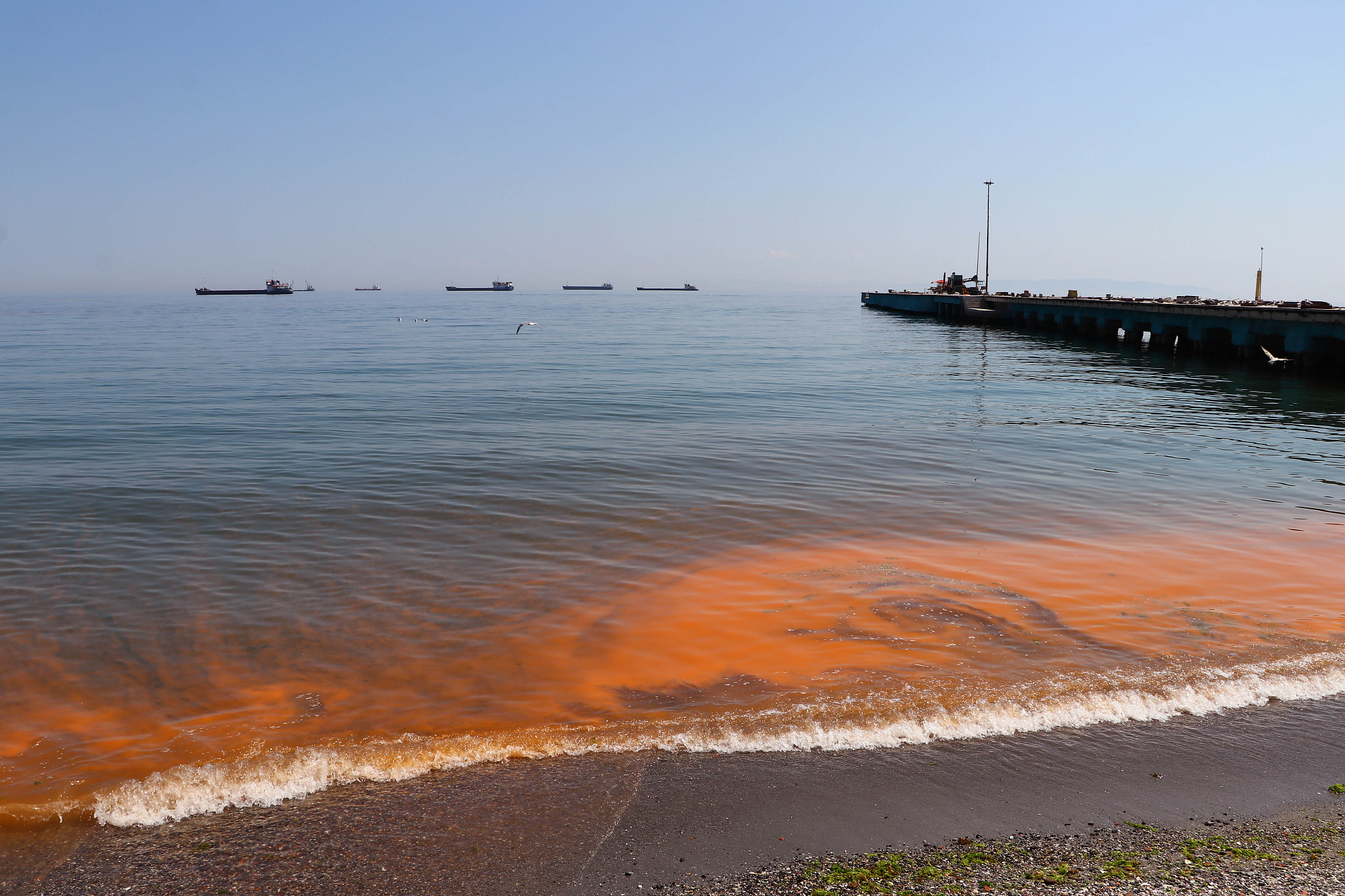Potentially lethal marine algae blooms have not increased in number over the last three decades, but pose a serious threat to aquaculture, according to a UN global assessment released Tuesday.
The origins of so-called harmful algae blooms (HABs), such as the one responsible for the "sea snot" sludge currently affecting Turkey, remain unclear, UNESCO's Intergovernmental Oceanographic Commission said in a report.
They are thought to be a natural process, but nitrogen and phosphorus runoff from agriculture, along with the inadvertent introduction of invasive species, could make them worse.
Climate change is not thought to play a role, according to the unprecedented analysis of nearly 10,000 algae blooms from 1985 to 2018.

An aerial view of white layer formed on the sea, caused by the sea snots near Maltepe, Kadikoy and Adalar districts of Istanbul, Turkey, May 2, 2021. /Getty
An aerial view of white layer formed on the sea, caused by the sea snots near Maltepe, Kadikoy and Adalar districts of Istanbul, Turkey, May 2, 2021. /Getty
A sharp increase in the poisoning of farmed fish and shellfish worldwide had led to speculation that toxic algae blooms were on the rise.
But such incidents stemmed more from an increase in fish farming itself, which grew 16-fold over the 33-year period.
"Overexploitation acts as a natural multiplier of the effects of HABs," said co-author Adriana Zingone.
"This leads to an increase in impacts independent of an actual trend in HABs."
About five percent of the world's 5,000 species of algae can cause blooms that have negative effects on humans.
These range from poisonings due to eating toxic shellfish to outbreaks of off-putting marine mucilage like the one clogging waters off Istanbul.
Also relatively rare but exceedingly costly are deadly incidents in which algal blooms invade fish farms.

A gull trots down a beach by the Dnipro River during the blooming of algae, Cherkasy Region, central Ukraine, July 15, 2019. /Getty
A gull trots down a beach by the Dnipro River during the blooming of algae, Cherkasy Region, central Ukraine, July 15, 2019. /Getty
In early 2016, a surge in algae in Chile's waters choked to death an estimated 40,000 tons of salmon worth some $800 million dollars, leading to social unrest.
"Wild marine finfish can simply swim away from blooms," the study explains, "but those held captive in intensive aquaculture operations are vulnerable."
Researchers found about half of the incidents covered by the study involved seafood toxins, with over 80 percent of those impacting shellfish.
Paralytic shellfish toxins, which account for the largest share of these, led to some 3,800 poisonings over the period of study.
The majority were in the Philippines where the population is heavily dependent on fish farming for its food supply.

A view of a red tide causing discoloration of coastal waters due to large algal blooms as seawater temperatures rose at Marmara Sea in Tekirdag, Turkey, April 28, 2020. /CFP
A view of a red tide causing discoloration of coastal waters due to large algal blooms as seawater temperatures rose at Marmara Sea in Tekirdag, Turkey, April 28, 2020. /CFP
The study notes that food safety risk management, including the closure of shellfish harvesting areas, means toxic algae blooms do not always lead to poisonings, and rarely to fatalities.
According to the National Oceanic and Atmospheric Association, the underlying causes of algae blooms are poorly understood.
The study found no evidence to support the widely-stated claim that algae blooms could be increasing across the world, perhaps due to global warming.
But, NOAA notes, many species flourish in favorable winds and water currents, and some blooms may be linked to nitrogen, phosphorus and carbon runoff from farming that could "overfeed" algae downstream.
(Cover image via Getty.)
(If you want to contribute and have specific expertise, please contact us at nature@cgtn.com.)
Source(s): AFP

